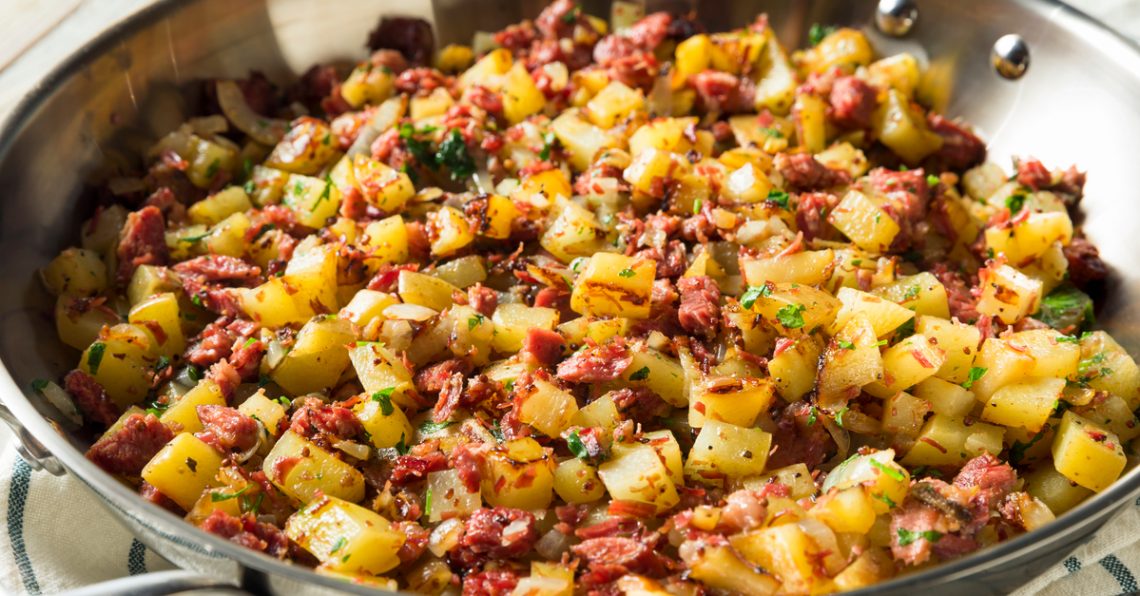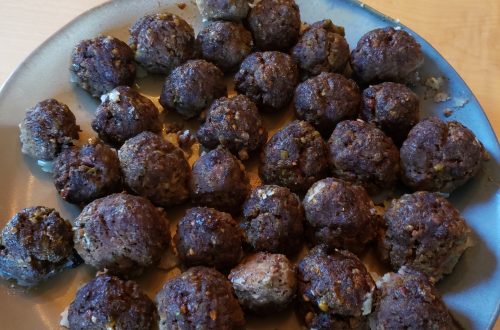
Making Hash Out of Holiday Dinners
We’re getting to the end of the festive holiday meals, and the leftovers are piling up. Now’s the time to think about that old standby: hash. All those potatoes, vegetables, and that large hunk of meat are just asking to be made into that old dinner standby. Classic hash – chopped meat, potatoes, and fried onions – has been a part of American cuisine for at least 150 years. In the mid-1800s, cheap restaurants were called cash houses or hasheries.
Of course, it took the French to come up with the name. Hacher is a French verb meaning to chop. And hash-type meals were part of European cooking. The British had been making hash for 200 years when Samuel Pepys, best known for his diary of the Plague and the Great Fire of London in 1666, wrote about a rabbit hash he enjoyed in 1662. In the Nordic countries, it is known as pyttipanne (Norway) or bikesmad (Denmark), and typically includes pork.
Chop chop
What makes a good hash? First off, I suggest you pad the amounts in that roast beef, roast pork, or corned beef dinner to have enough leftovers for hash. On hash-making day, start with a good fat in your frying pan: butter can’t be beat, but bacon fat adds a little flavor. Olive oil is OK, but duck fat could put the dish over the top. Then chop in equal sizes the various leftovers that go into your dish. Start with a good chopped onion. Cook it until it’s soft, then add the rest of your chopped ingredients and season with salt, pepper, and a savory flavoring like Worcestershire sauce or ketchup. Spread the chopped ingredients out in a heavy frying pan and cook until they form a crust on the bottom. Some people add a little cream or milk at the end as a binder. Don’t forget to fry some eggs – one apiece at least – to top your hash.
Whatever you call it, it’s a satisfying meal and a good way to use those leftovers. New England’s classic version, Red Flannel Hash, uses beets instead of potatoes. My old pal from my newspaper days, Rick Howland, not only has his grandparents’ recipe for Red Flannel Hash; he also has their old, old skillet. Rick told me last week that he watched his grandfather, a World War I veteran who was born in the 1890s, make what Granddad called Plaid Hash that he probably learned to cook while growing up on a Maine farm.
Make like MacGyver
Eventually, Rick inherited his grandfather’s blackened aluminum skillet. The previous owners sadly are all gone now. Rick recounted how he made his own version of hash in that pan when his children were small. Especially on weekend mornings, Rick would throw together the remnants of the week’s meals, some meat, vegetables, fried onions, and whatever else was lying around, all topped with a fried egg or two. His own cross between hash and stir fry – his interpretation of his grandfather’s Plaid Hash – became known in his house as MacGyver meals. MacGyver was the 1980s television secret agent with imaginative scientific resourcefulness he used to solve problems and get out of a jam.
The skillet was lost for a time, Rick said, but turned up in the barn recently and will be put to work with the leftovers of a roast or corned beef. “We’ll see if there is family magic left in that skillet.”
As for me, I rely on my cast iron skillet or a large aluminum skillet for similar meals. But whatever the tool, I think Rick is onto something. Hash would hit the spot just about now. How about you? Are you craving anything in particular from your younger years?
To comment, please click on “Read in Browser” or on the headline to view the blog on the website. You can log in and comment at the end of the blog to share your thoughts and start a discussion.
If you’d like to share the blog, click on the Facebook icon or one of the others. Thanks!





3 Comments
Rick Howland
Lynn, fine job on the “re-hash.” I’m turning my kids onto this, and let’s see what they remember.
As I was reading this, I had a mental flashback to my mother using the pan to make her version of a roast beef hash which involved that pan and a counter or tabletop hand grinder. Keep dishing on the good stuff.
Lindsey Dealy
We’ll have to hash it out Saturday morning with the rest of the Christmas roast!
Chuck Kennedy
Your re-hashing makes me recall our family Sunday mornings when Dad would do the cooking. His “go-to” meal was what we nicknamed “DVOT” — “Dog Vomit on Toast”. The base was dried chipped beef with lots of butter and heavy cream. There were probably other spices he used that I was not privy to. Served over toast, it was excellent!